Hey all. Photowalk time! Usually I'm going back and forth here and there is such a hurry that I don't have much time to explore. I always have my camera with me, mind you, either my nice DSLR or my smartphone, but these days I don't often take the chance to get more into places. On this photowalk, however, I poked my head into two temples and one shrine. I have some photos and info for your enjoyment.
This was a walk, so I'm going to include it in #wednesdaywalk sponsored by @tattoodjay. I am writing this on a Wednesday anyway. As I've told many times, I usually schedule my posts a week or so in advance, so I can't promise this will hit on a Wednesday. Let's see how close I get!
I'm also going to pin this in pinmapple. I see—gak—zero pins in Okazaki! We gotta do something about that. I'm not sure how to create a walk on that map, so I just picked the starting point.
Anyway, let's go!
First up on our path is Hōfukuji Temple (宝福寺). This is a small temple near a park my kids often play at. There are some nice statues here. It is the first temple of the Mikawa Thirty-three Kannon Pilgrimage, so it does get some tourism, almost entirely from Japanese people, usually old men. Otherwise it is usually quiet and peaceful here. There are signs that it is slightly neglected, but I suppose the temple probably doesn't have a lot of money to maintain everything.
Before we go in, here's a sign
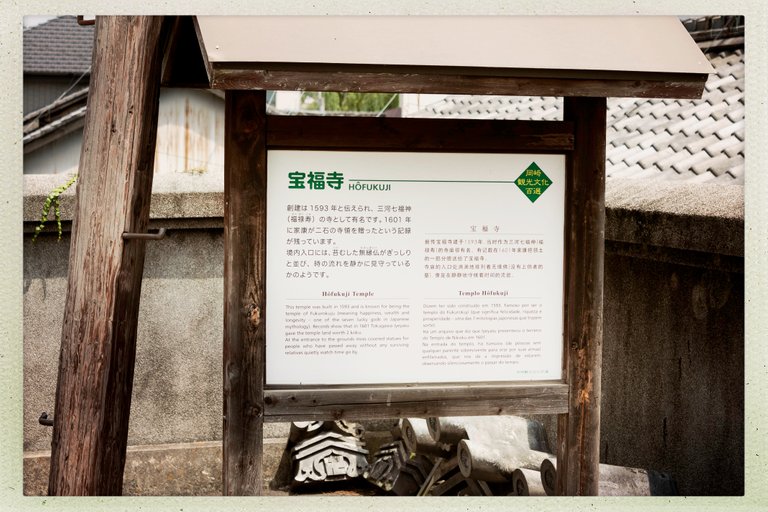
The Japanese says basically the same as the English. Hopefully the other languages on there are also fairly accurate.
The main hall:

And we have Jizō:
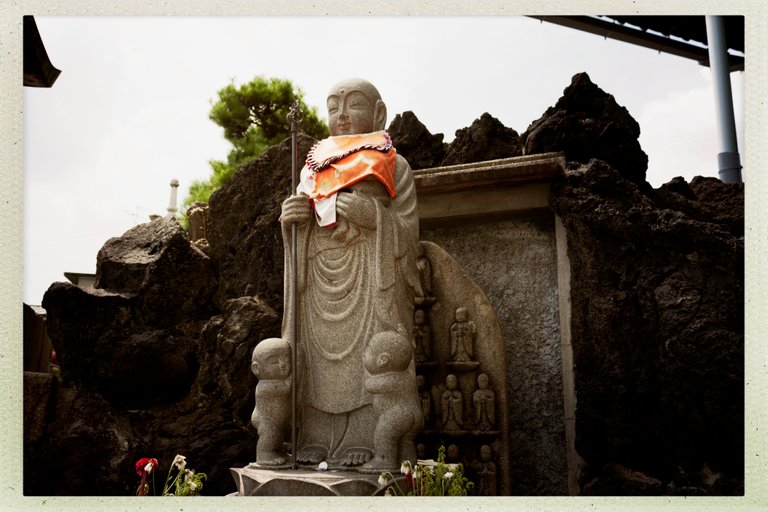
Jizo protects kids and travelers, so he's a popular guy to put statues of everywhere.
This temple was originally located next to Okazaki Castle, but it was moved to this location in 1593.
It's said that when Ieyasu was a child, he'd always stop by this temple after his archery practice and he'd pray at the statue of Fukurokuju, asking for long life. Fukurokuju is one of the seven lucky gods in Japanese mythology. This guy:
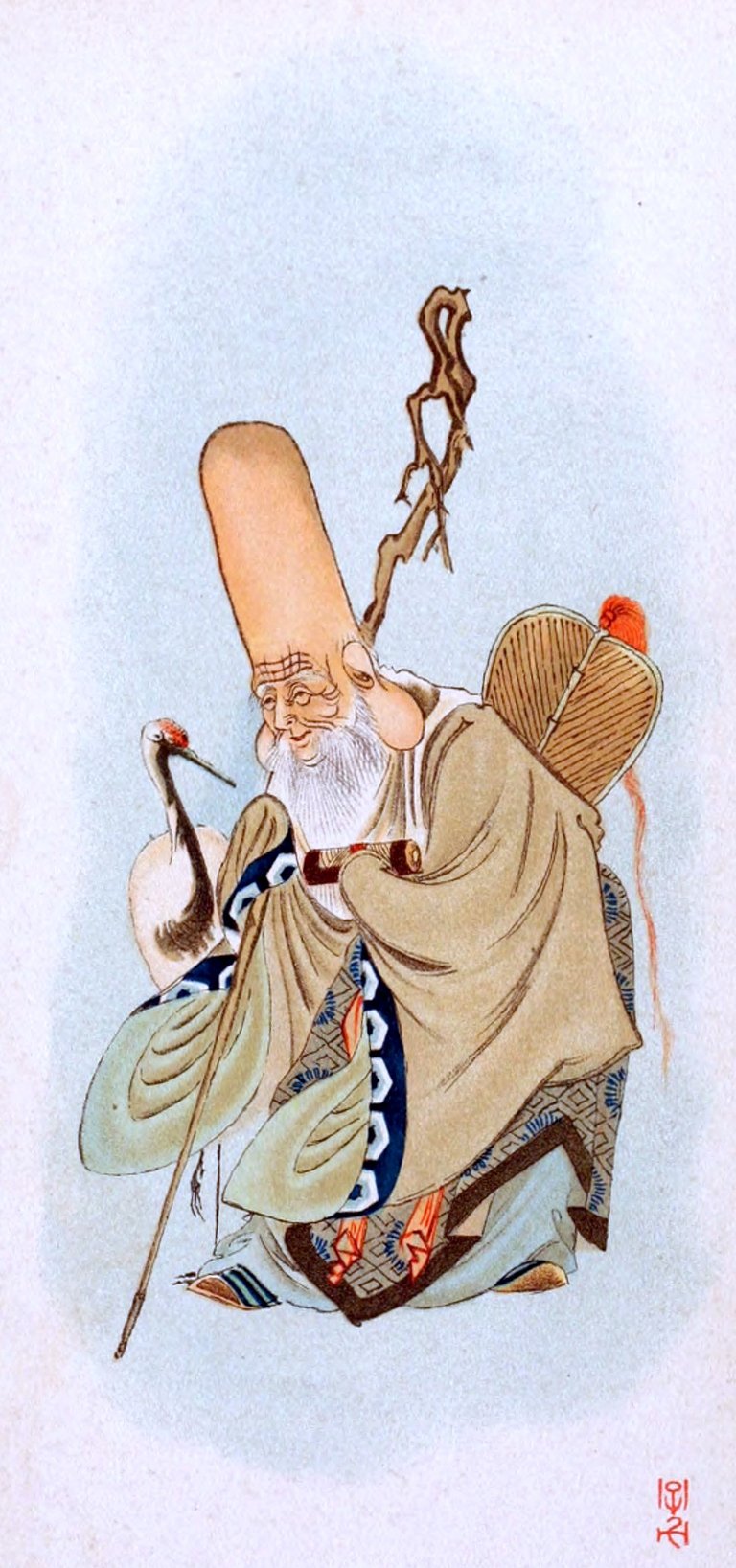
He is the god of wisdom and longevity. The crane is with him in that photo because cranes supposedly live a thousand years and are therefore symbols of longevity.
It was restored a bit in 1601, then the main hall was rebuilt in 1755. Finally in 1974 it was fixed up a little to be used as a hostel. I don't think that idea lasted very long.
Anyway, I also found this small shrine:
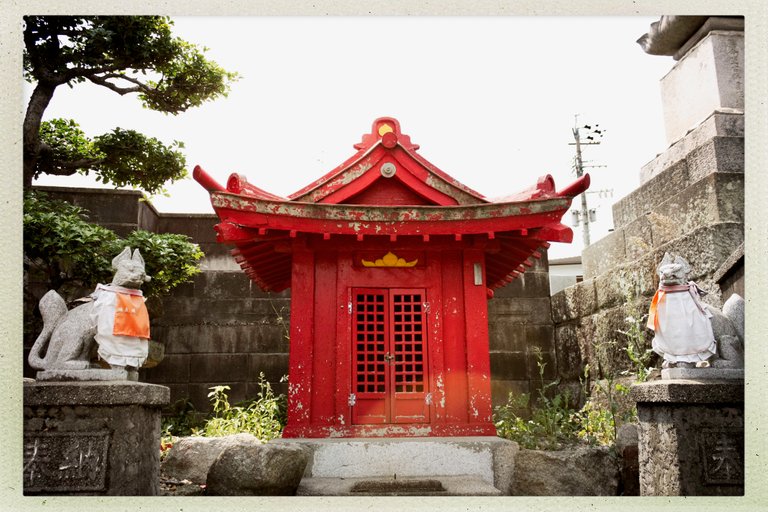
Seeing shinto things in a Buddhist temple isn't unusual. For much of Japan's history they were more or less the same thing, combined together so tightly that when they were finally separated, there remained a lot of cross over.
The two foxes tell us it's an Inari shrine. Inari happens to be the most popular Shinto god, so you see these fairly regularly.
And the buddha:
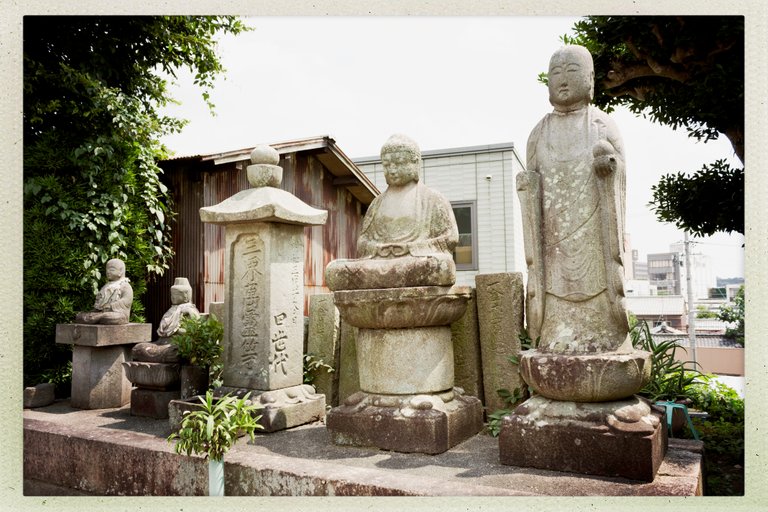
That might be Amida and Jizo standing.
Next I walked over to a very tiny shinto shrine
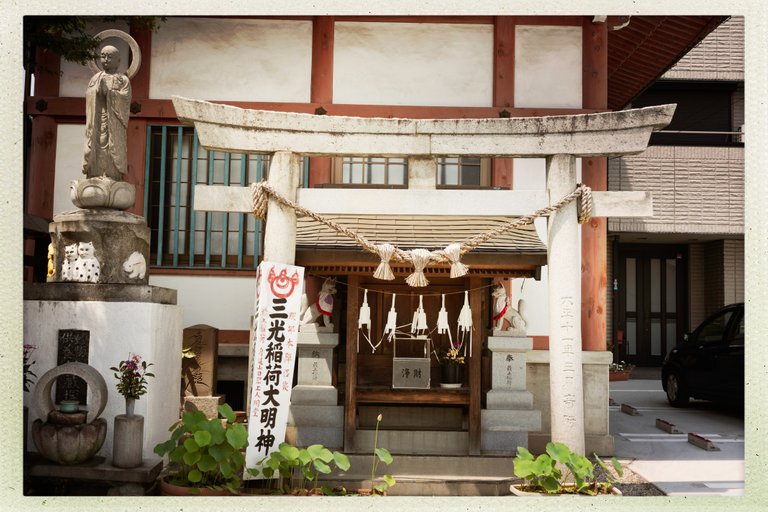
Sanko Inari Shrine for Daimyōjin (三光稲荷大明神). Not much to this place, but it's here so I stopped by.
Daimyōjin (大明神) is a title given to some Shinto gods that the imperial court finds impressive. I'm not sure what god was given the title at this shrine. Sanko? I don't know and I can't find any info.
It's actually an interesting term. the Myōjin part is from Shinto and the Dai part was from Buddhism. When the Meiji era started, the government forcefully separated Buddhism and Shinto (and very strongly repressed Buddhism, leading to a lot of temple destruction, but that's a story for another day) and discouraged usage of the term, but as you can see, it still survives.
Another Buddha, maybe Jizo again, and cats!
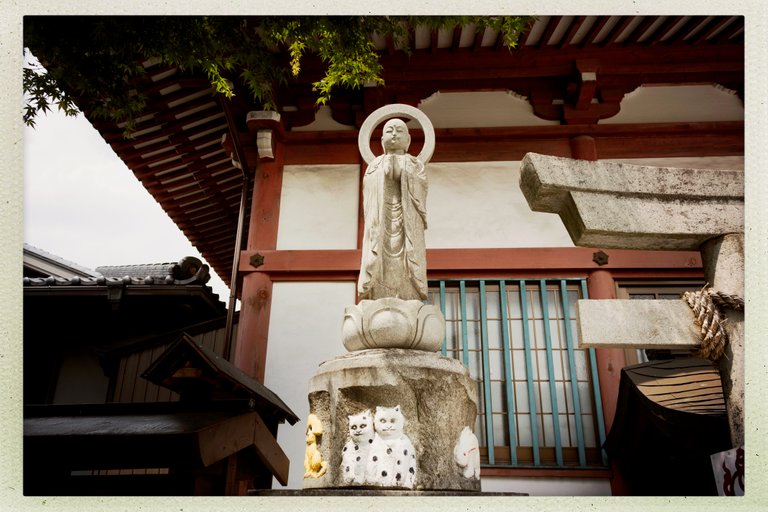
On the way to the next place, I came across this old futon shop:
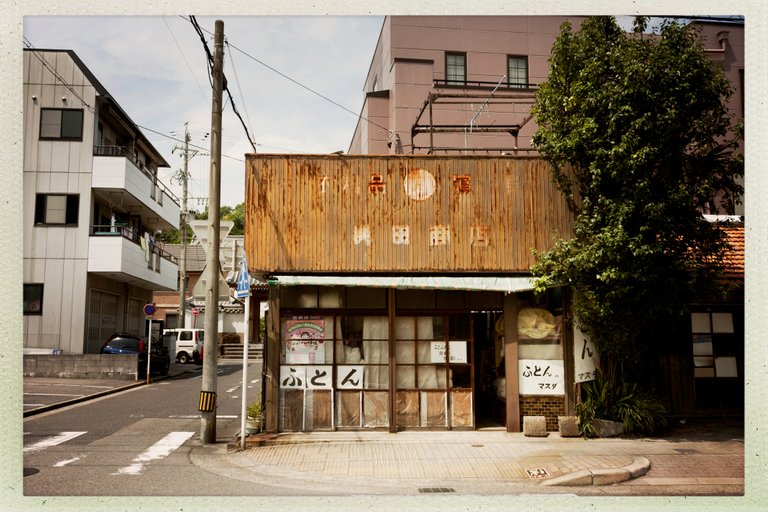
This place looks to be in kind of bad shape. But then again, many older stores look like this.
Anyway, next we come to Zuinenji. This place also had a sign, so here you go:
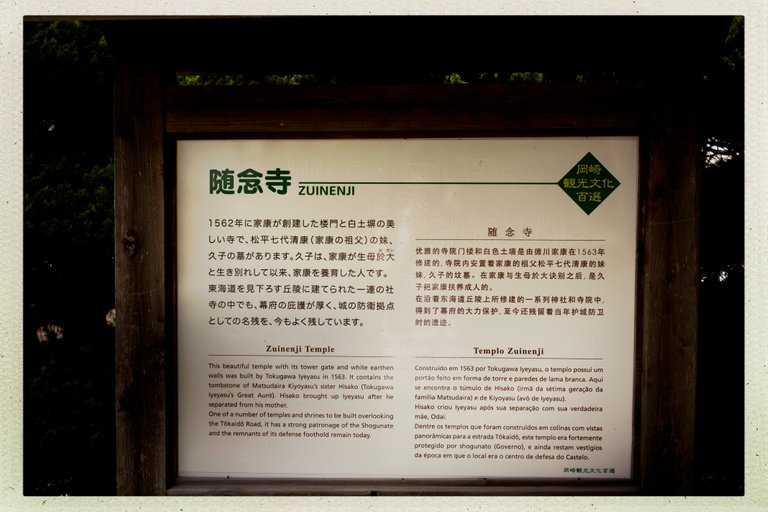
I've written about this place a few times in the past on Hive. I wouldn't say it's my favorite temple, but it is right on the way between one of my jobs and home, so I seem to end up stopping here a lot. I do like the gate to the place.
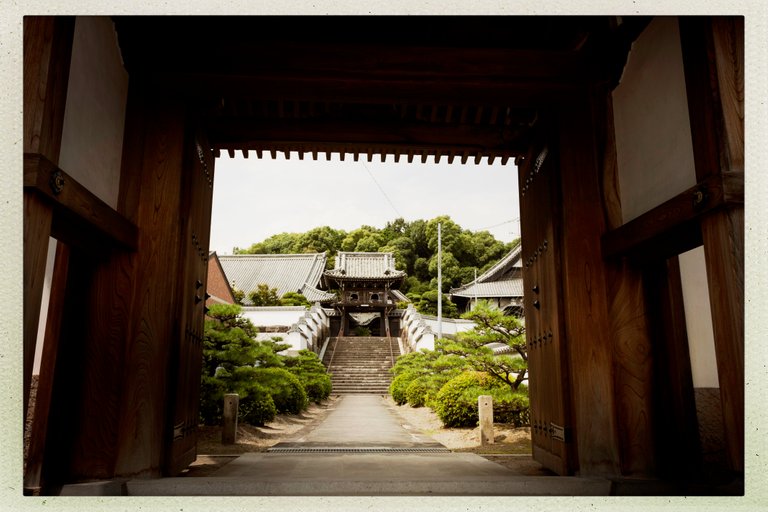

Going in we can see some traveler stamps:
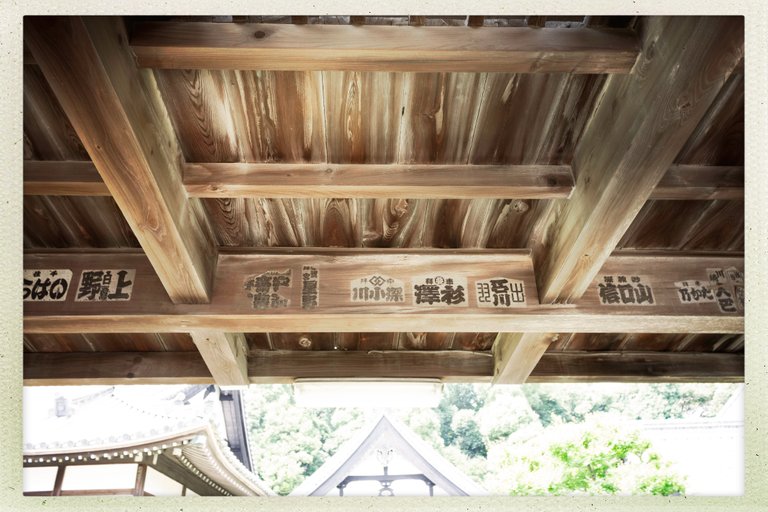
These are called senjafuda (千社札), and travelers used to stick them on temples and shrines when they visited. Temples and shrine still sell them but many temples no longer allow people to stick them on the walls. Many of the senjafuda from hundreds of years ago, however, remain.
And a buddha status
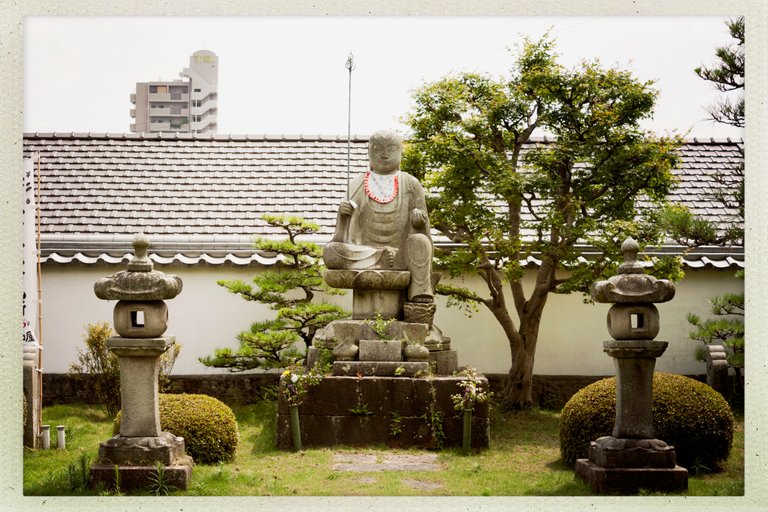
and many many smaller guys
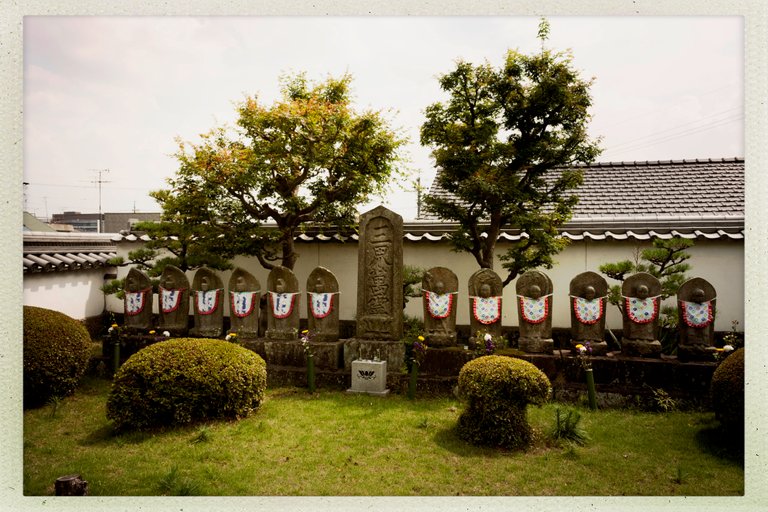
The temple was built by Ieyasu in 1563. It contains the tombstone of his great aunt Hisako who raised him. Maybe because of that, it was well supported by the Shogunate.
Here's the main hall
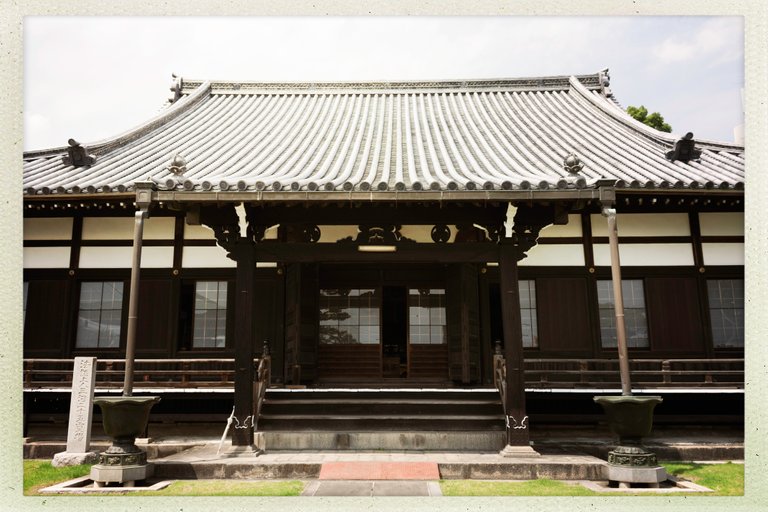
Here are some uhm... demon cats or something.
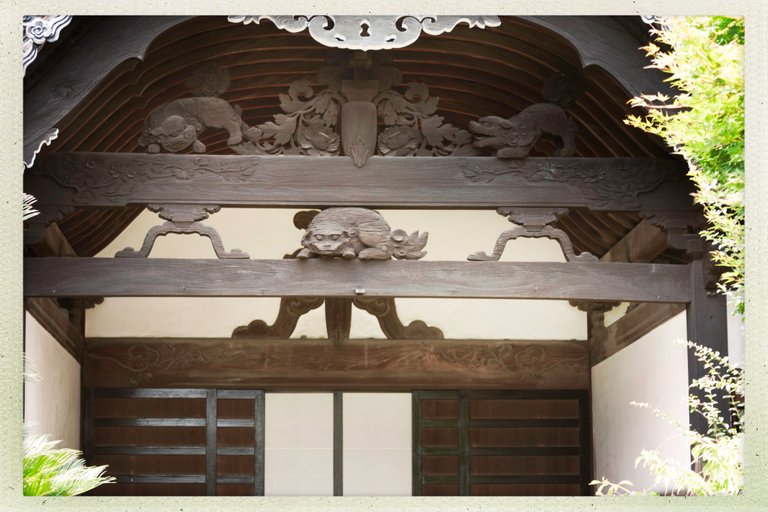

Well there we go. I'll try to post more of these going forward. Okazaki has tons of temples. I've been told that this city actually has the most temples in Japan outside of Kyoto. I don't know if that's true or not, but there are a lot.
Anyway, enjoy, and if you have any questions, leave them in the comments.
❦
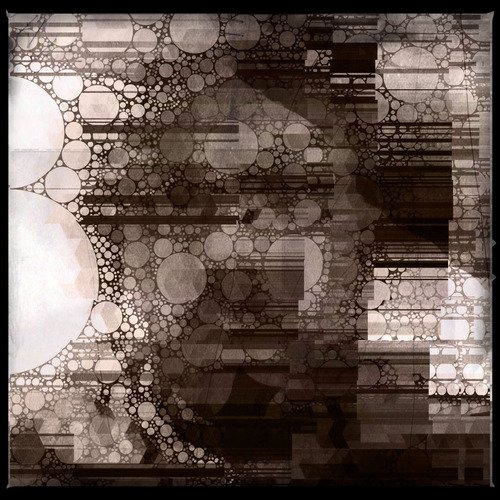 |
David LaSpina is an American photographer and translator lost in Japan, trying to capture the beauty of this country one photo at a time and searching for the perfect haiku. |
Love this one!
Glad to hear it! Thanks for checking things out. 😃
Here are some dope shots. Really cool
Thanks!
verry beauty photography
Thanks!
Congratulations, your post has been added to Pinmapple! 🎉🥳🍍
Did you know you have your own profile map?
And every post has their own map too!
Want to have your post on the map too?
Daily Travel Digest #1940.
Become part of our travel community:
- Join our Discord
- Learn more about our travel application
Hiya, @LivingUKTaiwan here, just swinging by to let you know that this post made it into our Honorable Mentions in Your post has been manually curated by the @pinmapple team. If you like what we're doing, please drop by to check out all the rest of today's great posts and consider supporting other authors like yourself and us so we can keep the project going!Sweet—thank you!